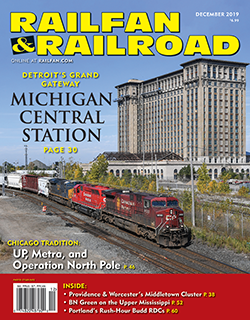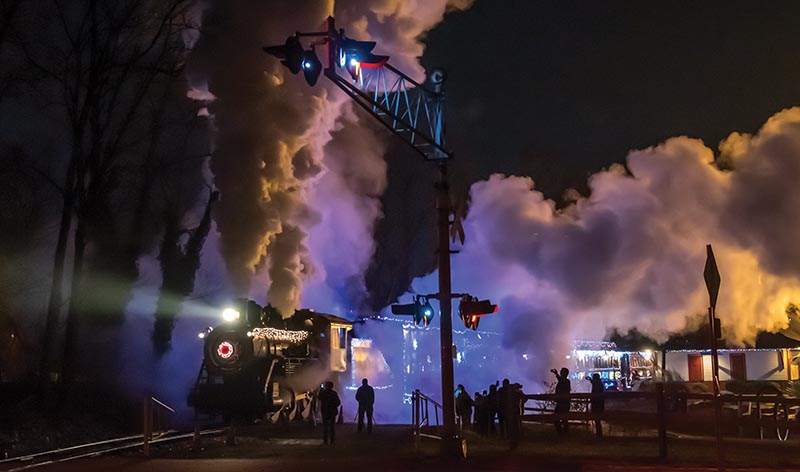 There has always been a strong link between trains and the holiday season. A train ticket just seems to go along with hot cocoa, holly leaves, and snow, even if you live in someplace warm like Florida or Arizona. But why?
There has always been a strong link between trains and the holiday season. A train ticket just seems to go along with hot cocoa, holly leaves, and snow, even if you live in someplace warm like Florida or Arizona. But why?
There are several possible answers, and the first that comes to mind may be the efforts of Lionel and other toy train manufacturers to link their products with the Christmas season. Massive media campaigns made sure you remembered the faces of happy children, Christmas, and a train set. If a Christmas tree does not have a wrapped train set under it, then it must have one set up and running around it, or it seems naked, somehow.
Or maybe we can point to the Polar Express phenomenon. Chris Van Allsburg’s beautifully illustrated children’s book about a fantasy train ride to the North Pole came out in 1985, and became an instant classic. Like many children of the 1980s, I had a copy of the book, and it remains as pleasurable to look at now as when I was six. Allsburg’s book went on to win the coveted Caldecott Medal, and in 2004 it was made into a popular animated film starring Tom Hanks. Since then, it’s become a whole industry, and tourist railroads across the country license the Polar Express experience.
While these recent examples reinforce the idea, they don’t fully explain why the tradition of train travel is so strongly linked to the holiday season.
Consider that the railways remade the nature of society. The country’s population became both more urban and more mobile, as railways fed the growth of cities. In 1820, the idea of traveling to another city, state, or region for a holiday was almost impossible. By 1880, the idea was routine as the country continued to expand westward. Extended families became distributed, yet also remained connected. When you add in the close succession of family-oriented holidays at the end of the year, the result is a peak in nationwide travel.
Until well into the 1960s, the leading mode for this travel was the train. Especially for solo travelers coming across great distances — be they servicemen or students — the train was simply the best option. Small-town depots were more accessible than big city airports, and air travel was less convenient and more expensive. Meanwhile, lousy weather across great distances tended to make winter road trips less attractive.
Although things have changed a great deal over the last fifty-odd years, there’s still a strong tradition of holiday rail travel in the U.S. Where I grew up in the Pacific Northwest, Amtrak routinely adds additional Thanksgiving week runs — known colloquially as “turkey trains” — to handle this extra business. A similar story can be told about routes across the country, from the Northeast Corridor to the greater Chicago region to California. More than this, the demand is growing: In 2018, Amtrak handled 846,000 riders during Thanksgiving week, its best ridership numbers ever.
December tends to be calmer, but only just. This doesn’t count the thousands of miles of commuter railroads, which add untold millions of rides to go shopping, visit friends, or go to grandmother’s house. The train remains firmly planted in the holiday season, and may it ever be so.
—Consulting Editor ALEXANDER BENJAMIN CRAGHEAD is a transportation historian, photographer, artist, and author.



